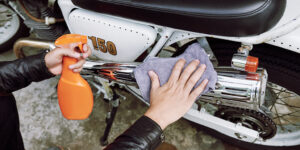Grow Channels Reviews are a great option for anyone who wants to earn passive income from YouTube. The program teaches you to create content for YouTube cash cow channels without appearing in the videos.
It also teaches you to use freelancers to handle research, script writing, voice-over, video edits, and thumbnail designs. Its strong community support and clear communication make it a great choice for beginners.

The Grow Channels platform is a training program that teaches you to earn passive income through YouTube automation. The founder, Razvan Paraschiv, claims extensive skills in this area and shares these with his students online. He also runs a Facebook community with more than 8k members and revolves around YouTube automation ideas.
Many of the reviews for Grow Channels are positive, with some claiming significant earnings from the platform. However, the platform is only suitable for some. For example, it is unsuited for those with a busy lifestyle or needing more time to manage their channel. It is also important to note that not all channel owners are successful.
Grow Channels offers step-by-step instructions and mentorship, which can be helpful for beginners. The platform also provides strong community support, which can help students overcome obstacles and succeed. However, some students are disappointed with the course’s basic content and high price tag.
In addition to video marketing, Grow Channels can also be used for affiliate marketing, whereby you can earn money by promoting products in your videos and earning commissions from sales. This is an excellent way to generate revenue from your videos, but managing the workload can take time. Luckily, you can outsource the work to freelancers or friends.
In addition to a growing YouTube audience, Growth Channels has the tools to optimize your content and improve the quality of your videos. This will increase your search engine ranking, improve your content, and lead to more conversions. It will also increase your brand visibility and help you target the right audience. Additionally, it can help you make better decisions about what type of content to create and when to post it. It will also help you track your progress and identify areas for improvement. Growth Channel AI will also save you money by reducing the number of campaigns that need to be approved.
Grow Channels is a program that offers step-by-step instructions and mentorship for YouTube automation. It also provides strong community support. Moreover, it helps individuals to start their own YouTube cash cow channels. The program also teaches them how to use Google AdSense to earn money. However, the program’s high price tag may deter some buyers.
The program has many positive reviews, including those from entrepreneurs and people who have already started making passive income from their videos. For example, entrepreneur Jennifer Crespo praises the program’s clear communication and swift applicability. She also recommends that people invest in the program as soon as possible. Other positive reviews include those from Zachery Martin and Mohammed Irfan. They recommend the program to anyone interested in learning YouTube automation.
Aside from the YouTube Automation course, Grow Channels has many other online courses that help you create and manage a successful business. For instance, you can learn how to build your website or improve your SEO skills. You can also learn how to market your brand using social media and email marketing.
Another way to make money on YouTube is by selling merchandise. You can sell items like shirts, mugs, and tote bags that feature your channel’s branding. This revenue-earning method is ideal for those with large numbers of followers. You can also offer channel memberships to your loyal fans to earn additional revenue. Lastly, you can earn money through affiliate marketing by promoting products in your video descriptions. This is a great way to increase your channel’s visibility and attract more subscribers. This will eventually lead to increased ad revenue. You can even earn from sponsorship deals when your channel reaches a certain level of popularity.
The Grow Channels program provides valuable content for aspiring YouTubers who prefer to avoid appearing on camera. It promises to teach them to make money on YouTube without showing their faces. It also teaches them how to find content for their automated channels. This way, they can get a better chance of qualifying for the YouTube monetization program. The program was created by Razvan Paraschiv, a Romanian YouTuber with experience running YouTube cash cow channels.
The course offers step-by-step instructions and mentorship. Its private community allows students to interact with other members and ask questions, creating a supportive environment. Students can earn money by selling merchandise such as t-shirts and mugs featuring their channel’s branding.
There are a few drawbacks to the Grow Channels program, though. One is its high price. The program costs $6,000, which may deter some potential students. In addition, the program’s website lacks crucial information about its origin, pricing, and refund policy. This can be frustrating for students seeking transparency.
Another drawback is that the program is difficult to implement for people who have no technical skills. It requires time and dedication, which can be difficult for people with busy lifestyles. Choosing a niche with high demand in your area, such as home repair services or food, is also important.
Growing a YouTube automation channel can be profitable for those passionate about video production and marketing. However, it’s important to understand that the profits can vary from one person to the next, depending on how much work they put in. A successful automated YouTube channel results from constant research and hard work.
While YouTube automation channels have become increasingly popular, they still need their challenges. Many factors need to be considered, including channel size and content quality. The best way to make money is by partnering with local companies. This way, you can target your audience and promote products and services relevant to their needs. In addition, you can also increase your income by using ad placements to sell your videos.
Grow Channels is an online program that teaches individuals how to earn passive income through YouTube automation. The program provides step-by-step instructions, mentorship, and a supportive community. However, it can be expensive and must be a better fit for beginners.
The program teaches the concept of running a faceless YouTube channel using professional freelancers to handle research, script writing, voice-overs, video edits, and thumbnail designs. This way, you can create high-quality content without appearing on the videos. You can then monetize your videos through Google AdSense, which pays you based on the number of clicks and views.
While the course is not for everyone, it does offer valuable information that can help you improve your YouTube channel. Its instructors are experienced professionals and are happy to answer questions. In addition, the course is simple enough to understand.
Some of the most common methods of earning money through a YouTube channel include affiliate marketing, merchandise sales, and sponsorship deals. In addition, you can earn money by creating channel memberships that provide exclusive perks to your most loyal followers. The program also teaches you how to design and sell merchandise such as shirts, mugs, and tote bags with your YouTube channel branding.
Despite the positive reviews, there are some negative comments about Grow Channels. For example, some users have complained about the lack of transparency in the pricing and refund policy. Others have said that the program is too expensive and needs more ideas.
While there are many ways to make money through YouTube, not all are equal. The most successful channels are those that have a clear strategy and goals. This means identifying the types of videos your audience likes and the content that will drive engagement. It’s also important to use analytics and metrics to monitor the success of your channel. You can then adjust your strategy based on the data. In addition, you should be prepared to experiment with different tactics and see what works best for your channel.





